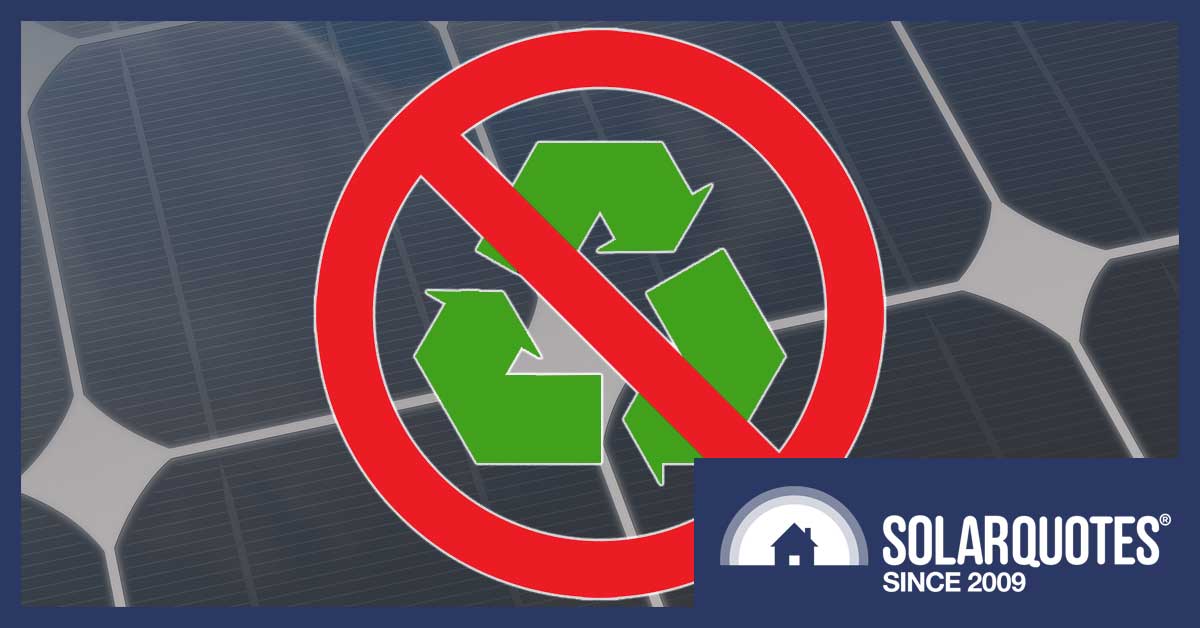
The conventional response to criticism of solar waste is panels can simply be recycled. But is that the greenest option?
Recycling is a good thing. Most of the time. Humans have been reusing material for thousands of years, probably beginning on a large scale when early agriculturalists noticed poo is good for plants. Ancient Greeks didn’t let pieces of broken pottery go to waste and used them like notepaper, while my father would collect (steal?) rubber bands because a dozen were worth a few cents back in 1950.
Recycling reduces the need for raw materials. Normally that’s a good thing for the environment, but not always. If it involves an environmentally destructive process or requires a lot of energy — which mostly comes from fossil fuels right now — then recycling can be a bad idea.
Because recycling solar panels requires a considerable amount of energy and expense, and because they are mostly harmless when put into landfill, I’m certain recycling solar panels is a clear environmental negative. This is likely to change in the future but until then I believe we should simply stack and/or bury them.

The inscription on this Ancient Greek pottery shard reads, “Keanu’s not immortal.” (Image: Wikipedia)
Appearances Vs. Reality
Recycling has a pretty good rep. But instead of treating…
“Recycling = Good”
…as a simple rule of thumb, some elevate it into an iron law of the universe regardless of whether or not it benefits the environment.
This kind of thinking leads to ridiculous outcomes. One example is a couple who arrive at the supermarket and discover they’ve forgotten their reusable shopping bags, so they drive back home to get them because they don’t want to commit the sin of using plastic shopping bags.
Please don’t be these people. It doesn’t matter if you have a Commodore V8, a Toyota hybrid, or an electric car,1 you will cause more damage to the environment driving just one kilometer than using a couple of plastic bags.
Modern plastic shopping bags that are made to be used multiple times only weigh 7 grams. Using one and then burning it may release less CO2 than using 10 millilitres of petrol, which will get the average Australian car less than 100 metres. Also, assuming you put the bags in the rubbish when you’re done with them and don’t swim out to sea and personally stuff them down a whale’s blowhole, those particular bags are very unlikely to harm marine life.
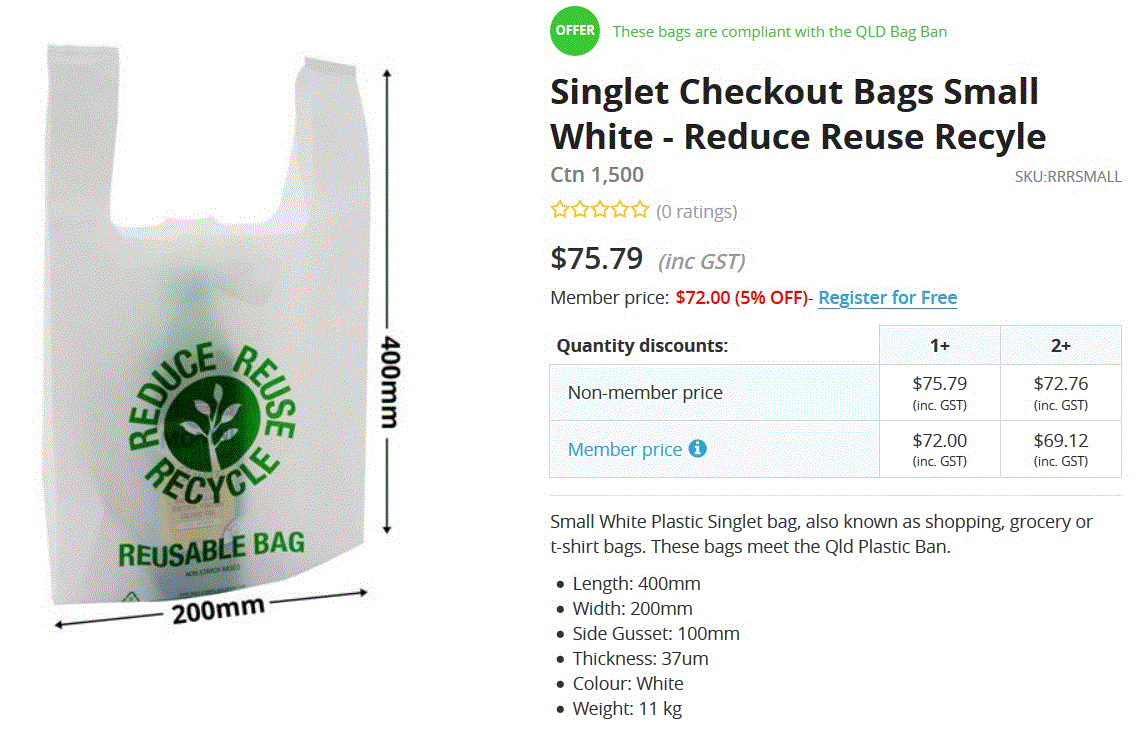
These reusable plastic bags are 7.3 grams each and made of high-density polyethylene (HDPE). They can be created in the Minecraft computer game by combining ethylene gas with a stupid parrot. (Image: Qis Packaging)
While an over-attachment to canvas shopping bags isn’t the worst problem in the world, counter-productive behavior based on the idea that recycling is always good should be avoided to prevent the world getting worse.
I think it would be a good idea if I came up with a catchy term for when recycling does more harm than good.
Recycling Vs. Miscycling
When I decided to come up with a term for recycling that’s environmentally counter-productive, I was originally going to call it Wank-cycling after the German Engineer, Felix Wankel. But then I found out he managed to get kicked out of the Nazi Party for being too much of a dick,2 so that idea went right out the window.
I toyed with the terms re-wasting and fritter-cycling and going through the ScoMotions,3 but I didn’t think any of them were better than mis-cycling and so miscycling it is.
Obvious Miscycling Vs. Economic Miscycling
There are two main types of miscycling:
- Obvious Miscycling: Recycling that results in measurably more harm to the environment than not recycling.
- Economic Miscycling: Recycling that doesn’t necessarily cause more harm to the environment than not recycling, but the cost is so high there is a clear alternative with a greater environmental benefit.
At this point in time, as far as I can tell, recycling solar panels is both obvious and economic miscycling.
Does It Pay For Itself?
If recycling saves a great deal of energy then it is likely to:
- Be environmentally beneficial.
- Pay for itself.
Generally speaking, traditional methods of recycling that have been around for a long time because they make money, such as reusing scrap metal, are a net environmental benefit. Recycling that requires a financial or legal incentive may not save enough energy to be environmentally worthwhile. Any time recycling requires more energy than extracting and refining more raw materials it’s likely to be a net environmental minus.
This is just a rule of thumb and each case needs to be considered on its merits. But if recycling doesn’t pay for itself it’s not a good sign.
Recycling’s Environmental Benefit Will Improve
Just because something may be miscycling now doesn’t mean it will always be miscycling. Processes can improve and energy is becoming greener. This means things that aren’t worth recycling now may make sense 10 years down the line. So rather than dumping stuff into landfill and forgetting about it, we should keep records so people in the future can benefit from our junk if technology advances enough to make it worthwhile.
Recycling Solar Panel Frames Is Easy
When I say solar panels don’t appear to be worth recycling I’m not referring to their frames. They’re aluminium and definitely worth ripping off and giving a second life. It’s actually worth giving aluminium more lives than a box full of cats, because recycling supposedly only takes 5% of the energy needed to smelt it from bauxite.
It’s also a good idea to pull off junction boxes from the backs of panels. The cables connected to them are worth recycling and it allows stripped panels to stack neatly on top of each other.
It’s only what’s left after a solar panel has been stripped that – at this time – isn’t worth recycling.
There’s Not Much Value In A Stripped Solar Panel
Without the aluminium frame and copper cables on the junction boxes there’s not a lot of value in a stripped solar panel. What it does contain, in order from the mostest to the leastest for a standard sized 60 cell panel, is:
- Glass — Around 12+ kilograms.
- Plastic — The backsheet is around 400 grams and there is also epoxy glue that holds the panel together.
- Silicon — Roughly 140 grams per modern solar panel.
- Grams of metals — The most valuable being the roughly 8 grams of silver per panel.
Glass: By weight, the largest component of a solar panel is glass. Unfortunately, scrap glass is not very valuable and so Australia only recycles around 56% of its glass bottles. Because recyclers can easily get bottles that don’t have solar cells stuck to them, they aren’t going to accept stripped solar panels as is. The glass will have to be extracted with a minimal amount of contamination and this is a difficult process. Once it’s done, scrap glass can be sold for $30 a tonne, which comes to about 40 cents per panel.
Plastic: To pull apart a solar panel, the epoxy holding it together has to be destroyed, so I don’t see how that can be recycled. The plastic backsheet weighs around 400 grams and if stripped away would be mixed plastic waste, as it’s made of various types. It could be sold for perhaps $225 per tonne or 9 cents per panel.
Silicon: There’s around 140 grams of silicon in the form of solar cells in a modern panel. While I’m not sure what its grade of silicon waste would be, it may be worth $1,500 per tonne or around 21 cents per panel.
Silver: There are small amounts of metal in a solar panel and the most valuable is silver. There’s around 8 grams in a modern panel. At $1.47 a gram that’s $11.76 per panel.
Copper: I don’t have a good figure for the amount of copper in a stripped panel4 but even if there is 100 grams, which I think is an over estimate, that’s only going to be worth about 85 cents at today’s prices for high purity copper.
Other Metals: After the frame is removed there is still some aluminium in a solar panel, but only around 80 grams. At the current prices that’s about 20 cents worth. I don’t think any other metals, such as tin, would be worth any significant amount.
If we list my estimated values for the materials in a modern panel below we get:
- Glass $0.40
- Plastic $0.09
- Silicon $0.21
- Silver $6.40
- Copper $0.85
- Aluminium $0.20
This comes to a total of $8.15 per panel.5 So to be financially worthwhile the total cost of recycling a stripped solar panel would have to be less than roughly $8. As no one is offering to pay for old solar panels or even take them off people’s hands for free, we can be pretty sure no one has worked out how to do this.6
Australia has one PV recycler and they charge $30 per panel they take. But that is for small numbers of unstripped panels and includes pick up, so we can’t say that’s the cost of recycling them. Last I heard they are still working on their recycling process and so solar panels they take may end up sitting around for a long time.
Solar Panels Can Be Recycled — At A Cost
There is no question that stripped solar panels can be mostly recycled if desired. Here’s a video of a factory in France showing how it’s done:
This plant is effective at extracting most of the material in old solar panels — by weight — but this kind of recycling — or miscycling — has a number of problems:
- The value of the recovered materials doesn’t pay for the recycling and so a financial or legal incentive is required, otherwise it won’t get done.
- This one plant is for all of France, so panels will have to be transported long distances. In Australia this will involve burning diesel.
- The recycling plant consumes energy. In France electrical energy mostly comes from nuclear and renewable generation, but in Australia it’s still mostly comes from coal. There is usually a process not shown in the video that uses heat7 to break down the epoxy that holds the panels together. This heat could come from electricity, but in most industrial process it comes from natural gas.
- The factory requires a lot of steel, concrete, and other material that represents a lot of CO2 emissions from their production.
There are things that could reduce a recycling plant’s environmental effect, such as putting solar panels on the roof. But if the electricity they generate would result in more environmental benefit if fed directly into the grid instead of powering the recycling plant, then it’s still wank-cycling. Sorry! I mean, it’s still economic miscycling.
Both Types Of Miscycling
Because the solar panel recycling process is energy intensive and the value of the recovered materials low, I’m certain in Australia it would result in more CO2 emissions than it avoids and so would be obvious miscycling.8
Rather than spending money on a recycling process that doesn’t pay for itself and is likely to increase emissions, it could instead be spent on things we know will reduce emissions such as wind and solar energy or reforestation.9 So it would also be economic miscycling.
There Is No Solar Waste Crisis
If you look online it’s easy to find articles declaring we’re heading for a solar waste crisis and will soon be inundated by tens of thousands, or hundreds of thousands, of tonnes of old solar panels.
The good news is there’s no crisis. There is only a trivial solar waste concern. But I can forgive people for thinking there’s a serious problem because the numbers involved are pretty big. Griffith University researchers say Australia could have 1.5 million tonnes of solar panel waste from residential installations alone by 2050.
Currently 14 gigawatts of PV have been installed in Australia, which is around one million tonnes of panels. Over the past year a record breaking 3.6 gigawatts was installed. If I assume this installation rate keeps up for the next five years and every solar panel installed before 2025 will have to be scrapped while ones installed after that will still be in use in 2050, then in 40 years time we will have around 2 million tonnes of solar panel waste.10
It may seem that if we don’t recycle such a massive amount of waste we’ll end up with a mountain of old solar panels that rivals Uluru, but it’s not that bad. If we stacked stripped panels one metre high we could fit 2 million tonnes in under one square kilometre. This means we could fit all of Australia’s solar panel waste up to 2050 inside a few parks just south of Adelaide’s CBD.
While I’m sure no one would mind if we leveled a few Adelaide parks and filled them thigh high with old solar panels, you may still say that nearly one square kilometre is a lot of land. And you’d be right. After all, I wouldn’t want to mow it with a Victa 4 stroke. But I’ll provide a little perspective by taking the national solar dump out of Adelaide and moving it 100 kilometres east:
Can you see it? It’s covering the same area but it’s hard to make out, so I added a little arrow to help. If you can’t see the arrow, just find Wally and look towards where he’s pointing.
I was going to make another map where the camera is pulled back even further, but I had trouble drawing the solar waste dump because I couldn’t make anything smaller than one pixel.
If you still think nearly one square kilometre is too much space after looking at the big picture, remember we can always do something crazy like stack the panels 2 metres high and halve the amount of land required. Around the rural metropolis of Ceduna that would cut the cost of the land required from $50,000 to $25,000.
As for solar waste produced after 2050, I’m hoping we won’t have to wait that long for solar panel recycling to pay for itself. Even it it doesn’t pay, if we no longer use fossil fuels for energy then recycling them won’t be the environmental negative it is today.
A Coal Comparison
Because I’m creating images showing how much space my 2050 national solar dump will take up in South Australia, I feel I shouldn’t pass up the opportunity to show it next to the old Leigh Creek Coal Mine:
As you can see, it’s obviously insignificant compared to one insignificant Australian coal mine. A mine that’s puny compared to the nearly 80 kilometer long Blackwater monster mine in Queensland. The Leigh Creek Mine removed 60 million cubic metres of coal when in operation, so we could fit my 2050 national solar waste dump in the holes they left behind more than 30 times over.11
Solar Waste Is Mostly Harmless
Some people are concerned if stripped solar panels are stacked in a field or buried in landfill, deadly toxins will leach out and wreak havoc, resulting in deaths, mutations, and tooth decay. I’m not saying we shouldn’t take sensible precautions, but we put far worse things into landfill everyday without worrying about it. Solar panels are a very benign form of electronic waste. While the solder used in them contains lead, the amount is so small if they are put into landfill the dirt that comes out of the hole can contain more lead than the solar panels. The silicon in the solar cells is made from reduced sand12 and is not dangerous. It is doped with chemicals but the amounts are minuscule and the chemicals used aren’t particularly scary.
Some solar farms and old rooftop solar installations use cadmium telluride panels instead of silicon ones. While cadmium is dangerous, cadmium telluride is very stable and not considered toxic if you happen to swallow it. (But if you go around swallowing cadmium telluride there is probably something else wrong with you.)
Fire safety standards have eliminated many of the toxins from plastics used in solar panels, as they can’t be sold if they emit significant amounts of toxic gas when on fire. Plastic backsheets can contain small amounts of fluorine but it’s normally stable over long periods if it isn’t burned. We use fluorine containing plastics for whiteboards and raincoats and I personally rub paste that contains it against my teeth at least twice a day. But don’t get complacent. Some fluorine compounds are the stuff of nightmares.
But even if solar panels did leak appreciable amounts of toxins it would not matter because it’s clear that Australians do not give a shit about this kind of thing. Let me show you what I mean. Below is a picture of Vales Point coal power station:13
That large light grey thing in the centre is a dam full of coal ash. It’s toxic, it’s uncovered, and it’s located in a populated area on Lake Macquarie. At around 1.5 kilometres across it’s considerably larger than my 2050 national solar dump. This was all produced by a single coal power station.
But wait! There’s still more! There’s another ash dam on Lake Macquarie at Eraring Power Station north of Vales Point:
Australia produces 12 million tonnes of coal ash each year14 which is far more than 2 million tonnes of solar waste by 2050 I used for my example. It’s also far more toxic than old solar panels. I’m not saying it’s as toxic as a bucket of angry blue-ring octopi, but don’t go sticking your face in either if you want a long life.
A Level Playing Field For Recycling
I’m not saying we should never consider recycling solar panels. I’m not even saying that if you want to recycle your solar panels you shouldn’t. But I am saying, at this time, we should not require solar panels to be recycled. I am confident it will harm the environment more than it helps. We definitely should not put a fee on solar panels to pay for their future recycling as this will increase the cost of solar power and slow the rate at which fossil fuel generation is driven out of the market.
But I’m a reasonable person and willing to compromise. I’ll accept a requirement that all solar panels have to be recycled, provided the coal power industry is held to exactly the same standard. No more ash dams, ash pits, and ash hills. All that toxic crud has to be recycled — somehow. Technically, every chemical reaction can be reversed, so if they apply themselves maybe they can turn a lump of coal ash back into ScoMo’s heart.
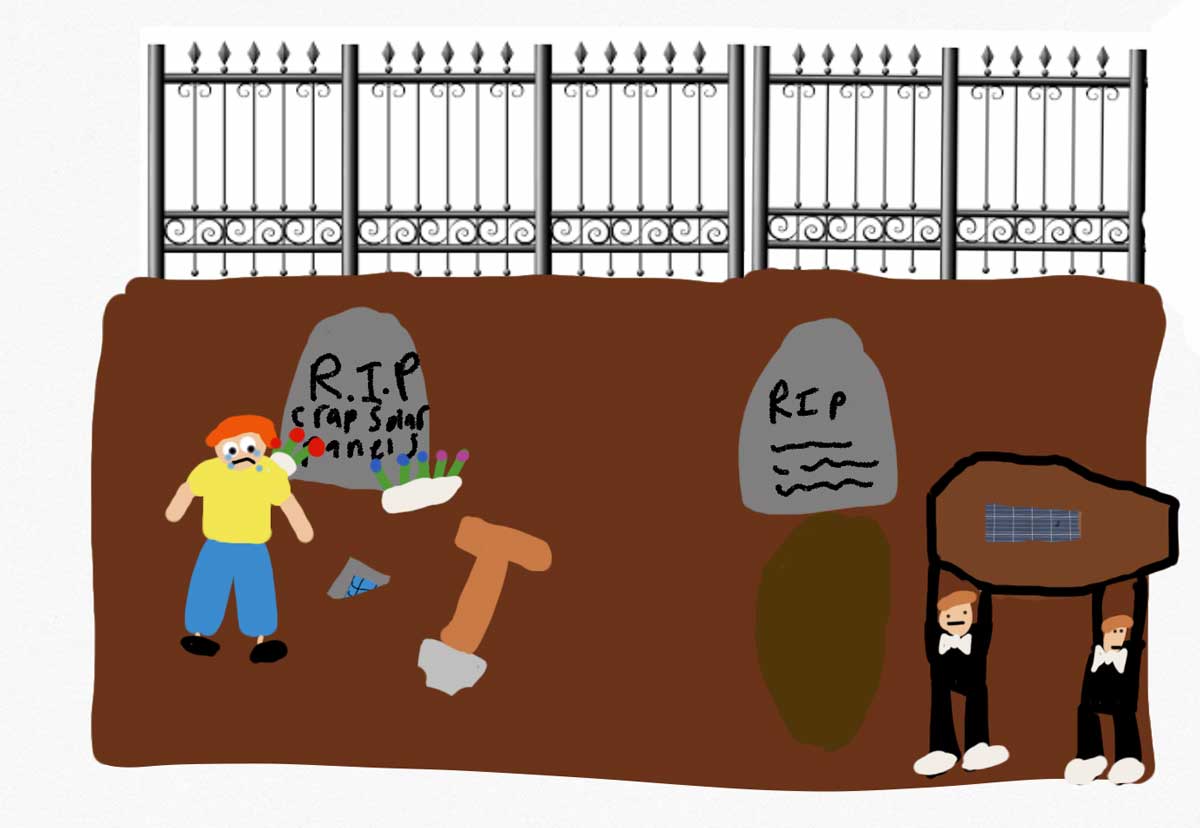
A crap solar burial. Image Credit: Emjay Peacock
Footnotes
- Even if you charge your electric vehicle with rooftop solar panels, this usually represents energy that instead could have been sent into the grid and reduced fossil fuel generation. ↩
- They eventually did let Wankel into the SS as an Obersturmbannführer. One one hand it was nice they were able to reconcile their differences and on the other hand they were involved in murdering millions of people. But even the SS couldn’t stomach him for long and kicked him out two years later. After the war Wankel said his anti-Jewish stance was a youthful mistake. He didn’t give his opinion on whether or not joining the SS at age 40 was a middle-aged mistake. ↩
- Politicians who pass recycling laws while doing nothing about climate change are literally fiddling while Roma burns. ↩
- But someone (maybe Yasuno Hamanaka) has worked hard to create the impression solar panels require more copper than they do by including copper used for transmission, tracker motors, and transformers in their estimates. ↩
- Higher estimates may include the frames and junction boxes. It’s also possible they looked at old solar panels that weren’t as efficiently made as modern ones. However, my personal hypothesis is they’re talking out of their butts. ↩
- Mining companies will extract silver from ore that has only around 50 cents worth of silver per tonne, so it may appear it would be worth extracting it from solar panels as their concentration is 16 times higher, but other metals are also extracted when getting the silver, so it’s apparently not worth mining solar panels. ↩
- Either a lot of heat, like 500 degrees, or less heat plus chemicals. ↩
- I’m also certain it’s obvious miscycling in France, but I’m not going to mention it because I don’t want to get into a fight with the French. Not when I might need all my energy to fight the Dutch. ↩
- Reforestation is important because the country is running out of trees to burn. ↩
- The assumption that all panels installed before 2025 will need to be scrapped while all after this will still be okay is a gross simplification, but given how panels are increasing in reliability I think it’s reasonable. Panels are also improving in efficiency which helps limit the amount of waste, as fewer panels are required per kilowatt of capacity. ↩
- More than 300 times over if we also count the overburden removed to get to the coal. ↩
- Reduced means the oxygen bound to the silicon was removed. ↩
- This is the power station the 2015 NSW Government sold for $1 million instead of trashing it and preventing god knows how many millions of dollars of damage to health and the environment in NSW alone. ↩
- I checked and this number is approximately right. Australia burns around 44 million tonnes of coal a year, down from the the peak of 58 million tonnes in 2008, and around one quarter or more of burned coal ends up as ash. ↩

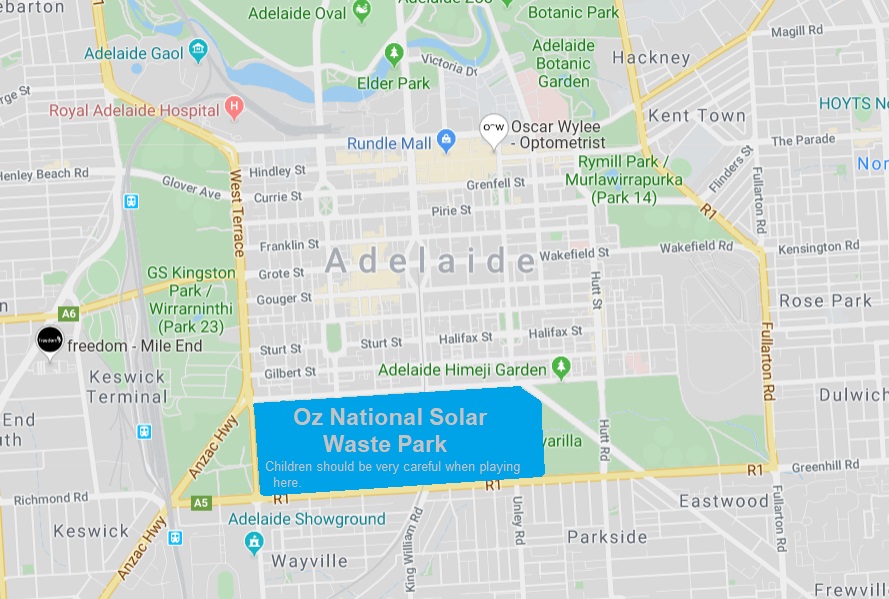
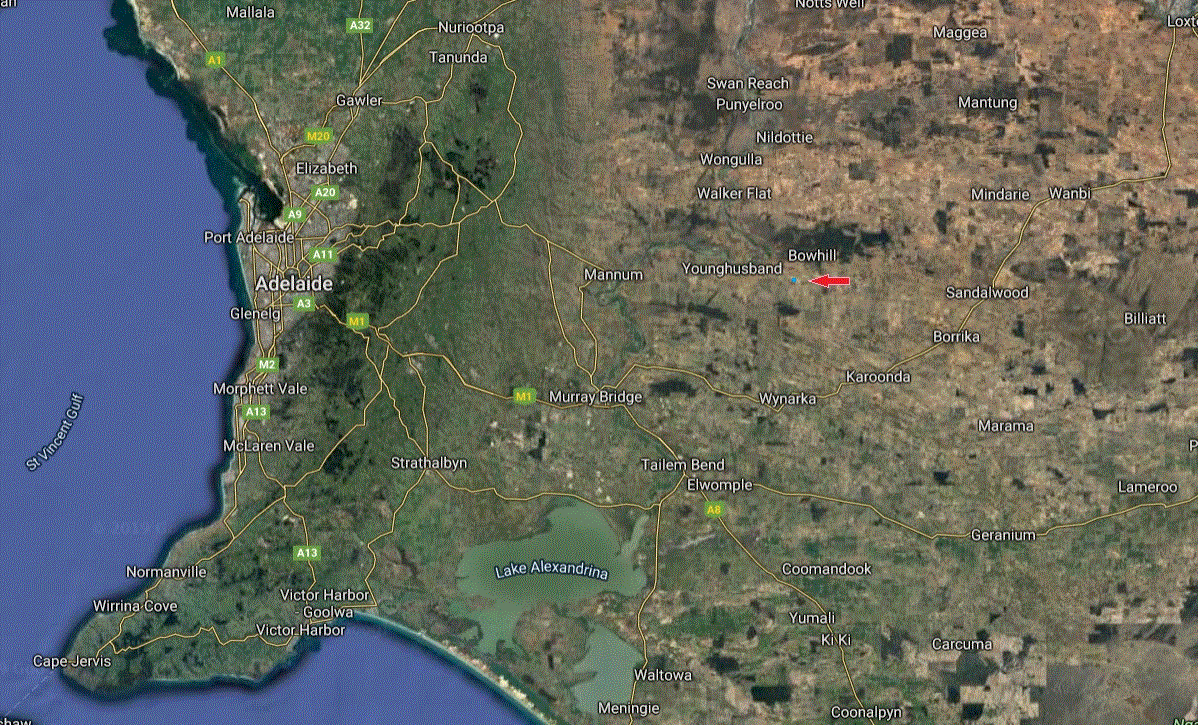
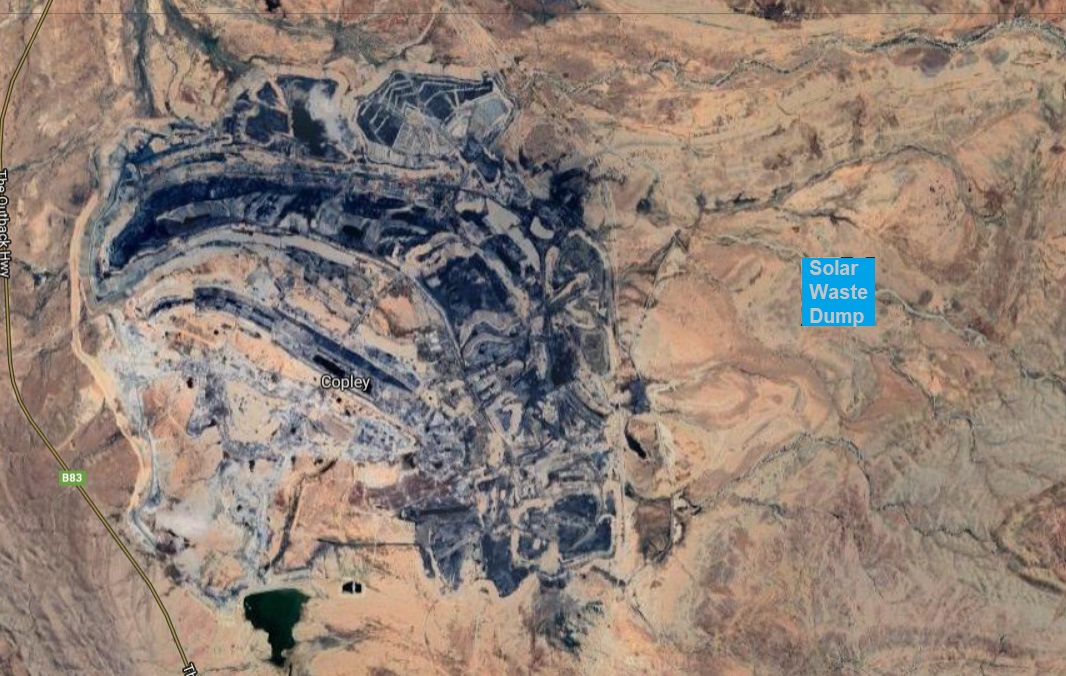
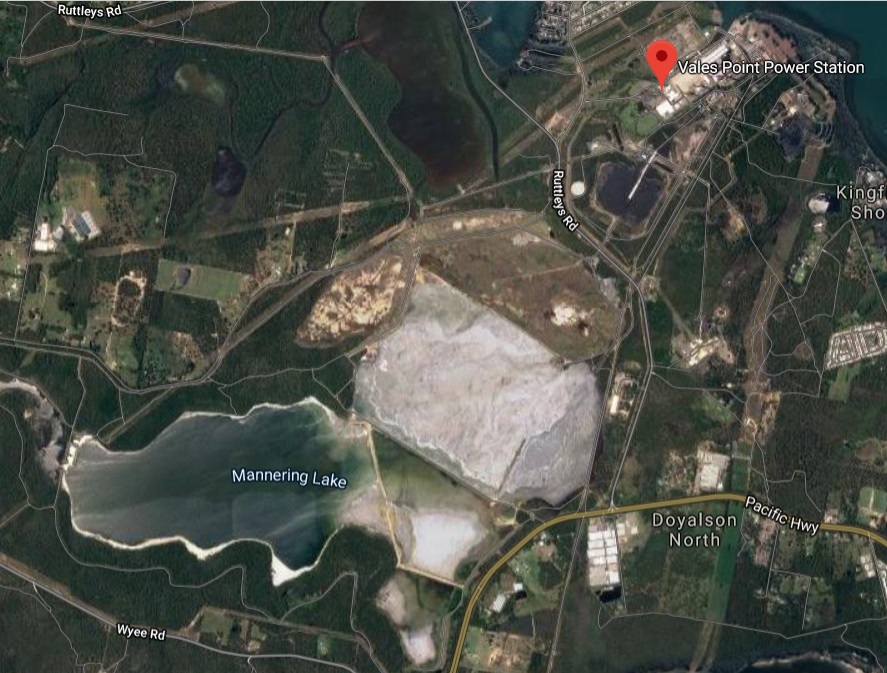
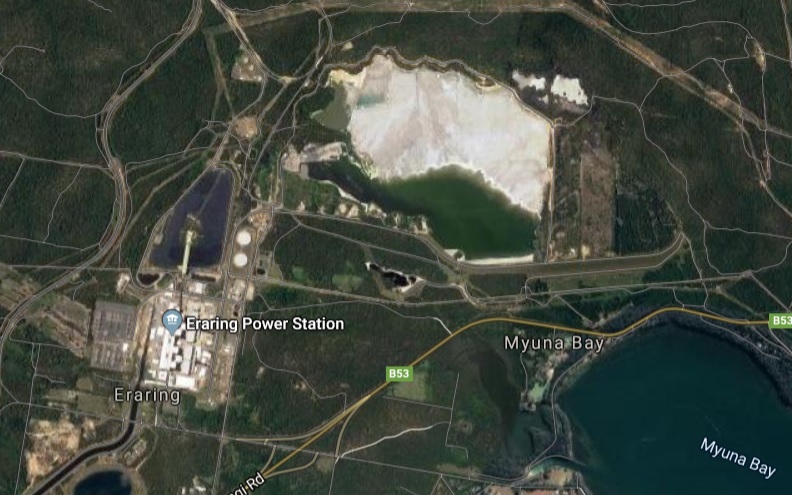
 RSS - Posts
RSS - Posts



“This is likely to change the future” -> This is likely to change *in* the future
Ooops! Fixed! Thanks for pointing that out.
“This is likely to change the future”
Maybe he’s been there in a Solar powered TARDIS.
Actually the best way to recycle old panels is simply to use them somewhere else. I assume Ronald is talking about non-functional panels only or those so small in wattage as to be useless.
Other uses for non working panels: Build a dog kennel, use as roofing material on a pergola, Put on a wall backwards and use it as a whiteboard. Make an innovative cover for ute. Buy 4 IKEA legs and you’ve got an outside table that’s a talking piece – insert other ideas here.
In other words – up-cycling is much better than landfill or recycling. IMO.
Yep, this is for non-functional panels. In China used but functional panels can be shipped to Middle Eastern countries. In some places they are very price sensitive and just want the cheapest panels possible.
That is what I was thinking – what an excellent supply of glass to use for something else like replacing the hideous polycarbonate people use for porch and pergola roofing. That stuff looks ugly, is impossible to clean and eventually crumbles into useless rubbish. I’m going to find out how and where I can lay my hands on some of it to make a solar air heater.
Is it possible to upcycle them? Can they have new photovoltaic cells put into the old panels… removing the need for manufacturer to buy and cut glass, frames and wiring? Removing the need for all the emissions in mining the raw materials again.
Often when we look at hard costs it’s linear and we are not thinking of the 3rd party costs and indirect costs to society of not recycling such… Costs to our environment, health and wellbeing that don’t have dollar signs on them. such as no carbon tax. Politicians from LNP and Labor are both great at not looking at the whole system when it comes to costs and it’s this linear thinking that has us in trouble now. With solar recycling it maybe worth governments subsidising so we don’t have to mine more sand for glass, have more silver mined, smelt more aluminium etc etc with all the unpaid for emissions that ultimately end up costing me and you…
That’s not upcycling – that’s repairing. Upcycling is taking an no longer useful item and re-purposing it for something else. Eg a non functioning microwave with a proper copper wound transformer, the transformer can be reused for a spot welder. A old treadmill motor can be re-used for many purposes.
[Australia produces 12 million tonnes of coal ash each year14 which is far less than 2 million tonnes of solar waste by 2050 I used for my example. ]
…which is far more…
Great article, Ronald.
.. so when electricity is free / cheaper than free …
#SA
Ronald
I like your article – but I have not done a deep dive in this category
But have you checked some of your assumptions and cycle costing with local guys in Adelaide ReclaimPV?
see https://reclaimpv.com/
https://www.abc.net.au/news/2019-03-25/solar-panel-recycling-1/10936848
Also, IMO some panels can be upcycled, used for secondary applications.
LG Vandenberg
Reclaim requires payment to take panels and my understanding is they don’t recycle at the moment. I hope they can get their costs down so when they start the price they charge per panel will be low and fingers crossed in the future the process will pay for itself.
Thanks for adding this. The unfortunate missing link in this article is the important infrastructure that we are setting up with the charges that we have been requiring our customers to pay. No information on this article points to this important fact. Our fee for low volume collection covers transport, admin and the remaining funds are put back into the growth of the development of infrastructure around this country. Understanding the dynamics of pv recycling is not in everyone’s mind however we are doing the work that is required to be prepared for the emerging issues that will come. This infrastructure includes drop off points and local in house collections. All of recycling processes have been developed and our business model roll-out is in accordance to the feedstock that is presented. As feedstock increases, our next step processing will take place. We are self funded and are working independently to bring recycling to the industry at a viable cost point. Thanks, Clive Fleming, Reclaim PV Recycling
Thanks, Clive
I would like to arrange a call sometime to discuss using your service for some plants that are Re-Powering their sites with New Bifacial High Yield PV Panels
I will send an email and set up a call
Learn about Solara at go.solara.io/1pager go.solara.io/webinar
Best Regards,
LG Vandenberg, PEng MBA
LG at Solara.io
“Energy is the only universal currency; it is necessary for getting anything done.”
– Vaclav Smil, Author of Energy and Civilization, A History http://vaclavsmil.com/2017/05/08/energy-and-civilization-a-history/

Shipping to the the middle east? too many stone throwers over there!
Looking through my friend’s photos of a trip to Egypt — the most populous Middle East country — I’m not seeing any broken windows. And I can’t see any dents in her head, at least not new ones, so it’s probably okay.
Examople of mis cycling
Wash your jam jar before throwing it in the recycle bin. Is it possible that the few grams of glass is worth the litre of water used to clean out the old jam? I have guessed that its best to send them all to a place that is responsible for cleaning them and guaranteeing that they are not still full of cynadie or something. I think I remember that the problem with glass milk bottles was thet they were so handy for measuring out engine oil or herbicide..
Another example, In France (I think) the government pays a few big companies to recycle used tyres. The big companies store them in tyre mountains until they find buyers for the recycled rubber and steel at prices that don’t cover the cost of recycling. Not a good business deal for the French government but it makes sure that all the beautiful scenery doesn’t fill with old tyres. Unfortunately I think that might be socialism and therefor abominable to our capitalist society.
An alternative to miscycling vs recycling — “redesigning”:
Years ago, the BMW company started a process to re-design their vehicles, to make more and more parts readily recyclable. For example, aluminium chassis and suspension components that are easy to separate and recover, plastic parts made of particular types of plastic materials able to be recovered and re-used for other useful purposes.
All while remaining economically viable (the recovery process, I mean).
Perhaps solar panel designers need to think more deeply about their designs, to make parts of them easier to be economically recycled?
Ian,
A very good point that I was going to raise. All goods should be designed for easy and complete recycling at the end of their working life.
Soylent green anyone?
The economics of recycling is always about scale and scarcity.
Is there enough “stuff” to warrant a recycling facility?
And, is the reclaimed product in demand – scarce.
Ir is also assumed that the same raw ingredients go into the unwanted products, to enable a large scale faculty to be set up.
In the near term, I cannot foresee any of these criteria being met with solar panels.
So, reluctantly, I agree that unloved panels will go to landfill.
A pity, but reality.
I meant to say “ it is assumed that the same mix of raw materials will always be used in the production processes”.
There’s an easy fix for this remove the stc’s from crap solar panels.
At the moment the government’s subsidising for crap that’ll be f***** in 2 years.
It is not generally known that fly ash from coal fired power stations is radioactive:-
At issue is coal’s content of uranium and thorium, both radioactive elements.
But when coal is burned into fly ash, uranium and thorium are concentrated at up to 10 times their original levels. Fly ash uranium sometimes leaches into the soil and water surrounding a coal plant, affecting cropland and, in turn, food.
The EVA is always the problem when talking recycling, there are high temp hot-melt potting compounds used in electronics already (I’ve been using high temp hot-melt potting encapsulant from 3M for over a decade), they are good to 120 degrees or more, so fine for normal operating conditions of PV. Something like that instead of EVA would mean you can just run old laminates through a solar powered oven and they would simply fall apart. It can’t be that hard to develop a suitable encapsulant…
I suspect that we wouldn’t even need to think about recycling for many decades if we didn’t allow cheap and failure prone panels on the market. Quality panels will go on for 20,30, 40 or more years with useful output so do not need to be recycled for a long time. Making quality panels seems to me to be the best use of the materials and manufacturing costs.
Thanks for this. I was concerned about dumping old panels because someone had said they are full of very toxic compounds. I’m very glad to hear this is not the case.
There will be a huge market for second hand/repaired/revamped/refurbished solar panels when the network for EV recharging starts to ramp up. There should be a penalty paid by “Tier 1” solar panel manufacturers that produce panels that don’t last the expected minimum of 20 yrs ……. but that isn’t likely to happen anytime soon is it.
I am in the process of refurbishing 2kW of second hand solar panels to put on my house roof. The plan is to go off grid and also recharge my PHEV Prius that’s been modified with a 10kwh second battery in the spare tyre well to allow it to drive full electric up to 80km/h for up to 100kms. I recharge it at the moment from refurbished solar panels on the roof of my 7mtr motorhome. 6 x recycled 250w solar panels make a great summer roof as well as powering the house part to the extent we have removed the LPG bottles and cooker, hot water service and 3 way fridge.
This is responsible recycling, smashing and burying old solar panels is bordering on criminal. It’s not rocket science testing old solar panels, stripping the plastic sheet off the back and repairing/replacing the faulty modules so the panel can have a second life. Wouldn’t this be a better option and actually become recycling $$ positive?
The sale of new panels and systems would still be there, some have limited roof area so the maximum output improvements todays panels can produce for the same foot print mean there will always be system upgrades. This means there will always be second hand solar panels.
T1 Terry
Sorry, that should have read 20kw of second hand solar, not 2kw.
On a related point: if you need to move your panels (in my case having built an extension on the house), you will discover that their registration has lapsed, and that you are required to throw them away.
The panels might be ‘guaranteed’ for 20 years, but the importers don’t bother to maintain the registration of the panels. That means that your installer is not allowed to reconnect them.
This is obviously a nice little earner for the sellers of panels, but also an outrageous waste of resources.
A handy little scheme eh ……. but the installer isn’t allowed to reinstall them? Says who? Unless it appears in the terms and conditions set out by the electricity authority, I’d call B/S on that. If they were registered at the point of the credits being accepted, then the same solar panels are going back up so the registration is continued from the first installation.
My guess is the installer/supplier wants to get a second batch of certificates on top of the payment for the R&R of the panels. I’d bet good money on that rule not applying if the installer had to do a warranty repair at sometime ……
I’d contact Tindo solar and ask them for a validity of the claim that the panels must retain a registration to be reinstalled if ever removed for what ever reason and if there really is such a thing as a continual renewal of registration required.
Certainly something to quiz the people giving you the quote for the new panels, what is your procedure for continuing the registration for the 20yrs the panel is warranted for, and ask the original system supplier where they stand as far as the guarantee of workmanship because this includes any paperwork involved for the life of the system.
Many people are confussed about the whole guarantee and warranty thing, a guarantee is on a person doing a task correctly, a warranty is on the actual hardware supplied.
T1 Terry
This document gives information on installation requirements for alterations to solar systems:
https://assets.cleanenergycouncil.org.au/documents/accreditation/technical-information/installation-requirements-associated-with-alterations.pdf
Section 3.8 on page 17 appears to be the relevant part.
Have actually read the reference Ronald? It actually starts on page 15 the removal and refitting or relocation would be classed as a repair under clause 1.9.3 AS 3000:2007 that is superseded by 3000:2018. You can read it here
https://www.gses.com.au/technical-articles/wiringrulesasnzs3000/
Can you point out where the registration of a solar panel being current appears as a requirement for reinstalling an existing system?
T1 Terry
I put the link there so people could get the information directly and prevent any misinterpretation on my part.
Fair enough, no attack intended so sorry if it read that way. The relevant link to the 2018 standard update seems to indicate the solar installer in Nicholas Reid’s case seems to have stretched the truth a bit about the panels not being registered so they can not be refitted in the same configuration as they were removed.
I wonder how much of that goes on out there were the customer doesn’t know better and is taken by the misleading statements of solar installers.
T1 Terry
I certainly hope there’s not a great deal of it going on. Any installer who gets a customer to pay for new panels they don’t need is acting shoddily. While requirements can be difficult to understand, installers do have a responsibility to know what they’re doing.
The system in France doesn’t use heat … the energy consumption is very low. .. . Contact me if you want more information about it …
A commentor who may be a spambot provided a link. I’ll put it here in case they are flesh and blood and wondering where their comment went:
https://www.solarpowerworldonline.com/2019/01/old-solar-panels-get-second-life-in-repurposing-and-recycling-markets/
Not a spambot – Heck would even like to meet in real – life – tried to reach out last time I was in Adelaide.
Are you real?
Not registering as a spambot now. It must have been the word “crypto” that set it off.
Sure, we can get together next time you’re in Adelaide. We can Voight-Kampff test each other until we’re satisfied.
https://onegianthand.com/post/166420552116/blade-runner
I have the infrastructure to reuse and refurbish old panels in the middle east for a second life-cycle.
Has anyone suggestions where I can get larger amounts of panels that would otherwise go to landfill/be shredded?
Thanks a lot,
Max